In their new book, The Baggy Green, Mike Coward and Michael Fahey look at the history of an Aussie premier sporting icon. In this edited extract the latter gives us a glimpse into why wearing this illustrious cap has always been the pinnacle for Australian Test cricket players…
In a world of instant gratification and increasingly meaningless accolades, the Australian Test cricket cap or baggy green is a mark of rare distinction, a national icon. A release in 2006 of a limited-edition lithograph by Legends Genuine Memorabilia was titled The Pride of the Baggy Green. This lithograph was the genesis of the research that evolved into our book, because during the memorabilia project it became clear there had been little research into the cap’s evolution and history.
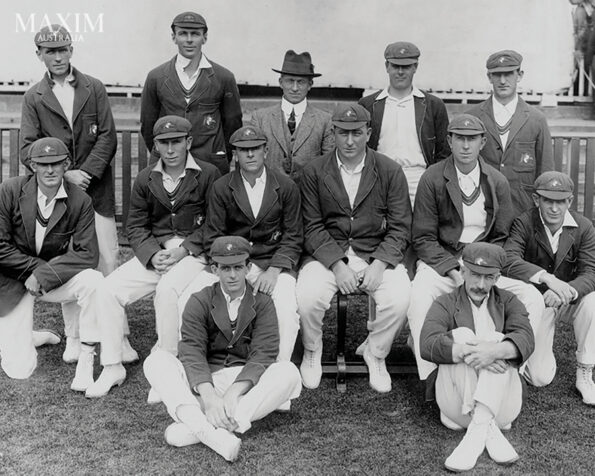
The timeline of caps in the lithograph started with Victor Trumper and continued through to the game’s greatest player Don Bradman and the cap he wore when he first captained Australia. The trilogy was completed with the cap of Steve Waugh, the baggy green’s most public face. These caps are truly the highlight of this unique, unifying symbol, and they relate the fascinating story of the cap’s evolution and represent both the history of the baggy green and Australian Test cricket.
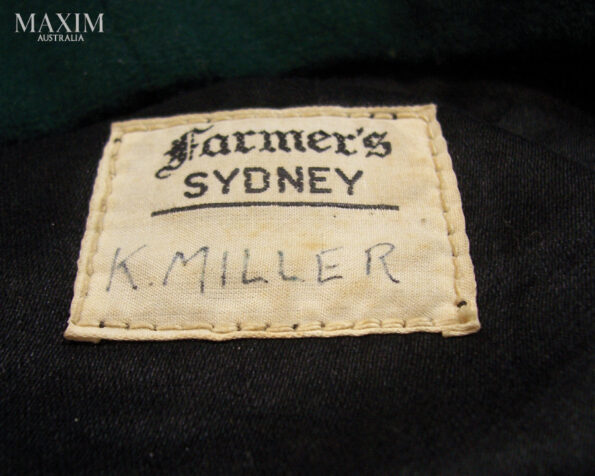
The current cap can be traced back to the cap and colours adopted by the visionary members of the 1899 touring team to England. In one of cricket’s serendipitous coincidences, the green cap with the Australian cricket coat of arms made its Test debut in the first Test at Trent Bridge, Nottingham – as did Victor Trumper, the game’s most stylish batsman and a great admirer of the Australian cap. His contemporary, Clem Hill, wrote that Trumper formed a strong attachment to the cap: “It was bottle green, but nevertheless he stuck to it to the end and there was always no end of bother if [Reg] Duff or some of the other humorists of the side got hold of the cap and hid it.”
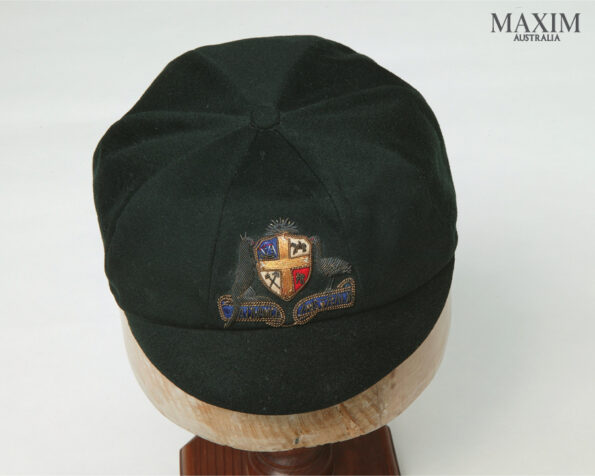
The colours adopted by the members of this team before the Tests, green and gold, became the colours for all Australian sporting teams. While the game’s administrators did not officially adopt the gum-tree green and gold colours and coat of arms until 1908, these 1899 colours and design were different from and predated the current Australian Commonwealth coat of arms, which was adopted in 1912. The cricket coat of arms is one of the few pre-Federation symbols in use today. The official Australian livery colours were blue and gold until 1984, when the Hawke government adopted green and gold as the national colours. The decision of the 1899 team to incorporate these colours with the coat of arms was a defining moment in Australian sport, as the colours were adopted by the Australian Olympic team in 1908, the Australian rugby league Kangaroos in 1928 and rugby union’s Wallabies the year after.
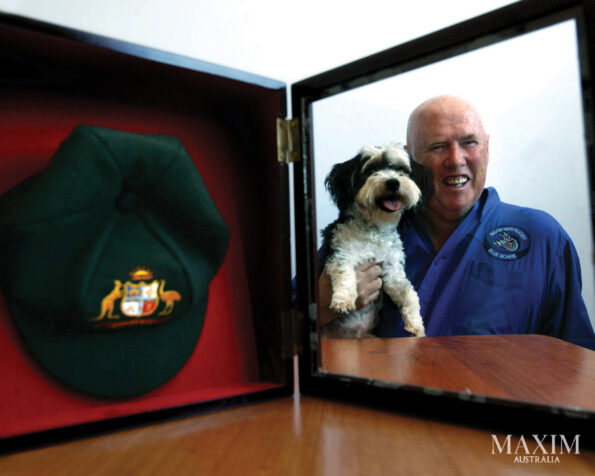
The long ancestry of the baggy green and the continuity in its design mean there is a strong sense of legacy and obligation for those selected as an Australian Test cricketer. Allan Border, a driving force behind the first reunion of Australian Test cricketers held in Sydney in 2000, revealed his inspiration: “In Australian cricket, one of our strengths has always been a good team spirit. Don Bradman played in a baggy green, so did Victor Trumper and all the blokes over the years. So, there’s a realisation when you get given that cap you’re part of something special.”
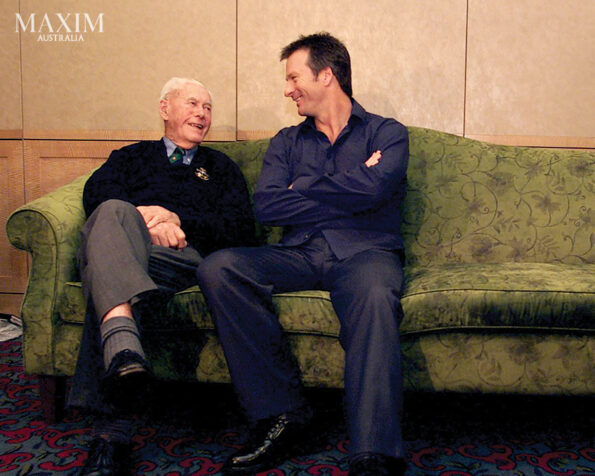
The baggy green has a uniquely Australian feel. Originally, it was a skullcap, like those commonly worn in England. From 1920, however, the cap had a “baggy” or Australian style; generally, this word is applied to all Test caps from 1899. The distribution of the Test and state caps reflects the egalitarian nature of Australian society. Every player receives a cap on selection, whereas in England caps are awarded to denote status and seniority. A player could remain uncapped even after years of representing his country.
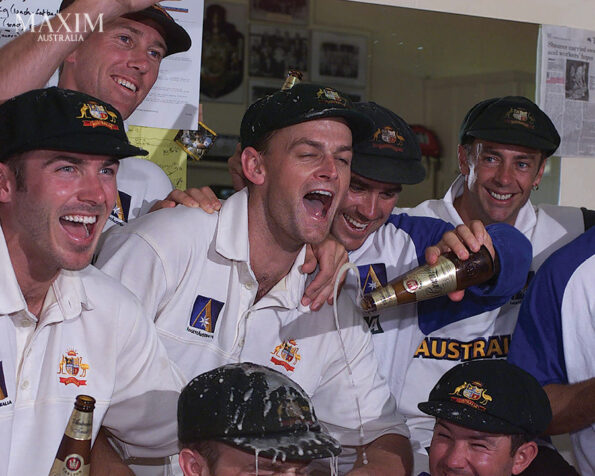
This sense that Australian values, history and legacy are represented in the cap re-emerged in the 1990s. In November 1994 Mark Taylor instituted the practice of the whole team wearing the cap during the first fielding session of each Test match. Steve Waugh said he had suggested this initiative in a team meeting. In any case, Waugh heightened the public perception of the players’ respect for the cap when he wore his baggy green until it almost fell apart. He ignored calls to replace the cap, although he did bow to pressure and had the peak repaired by Albion in 2002. Waugh received more than one baggy green cap during his career and certainly wore more than one cap, but a single one was worn for the vast majority of his career: the cap that was repaired.
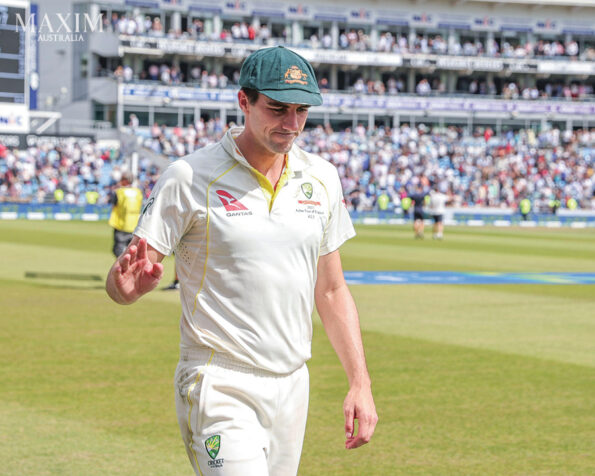
Now each Test player is handed his baggy green by a former player in a ceremony on the morning of his first Test. “It is such a special time for a player and the old procedure certainly lacked polish,” Taylor said. The formal ceremony instituted by Taylor in 1996 was refined by Waugh, who thought a former Australian Test player should do the presentation. This practice has been copied by rugby union’s Wallabies and South Africa’s Springboks.
In an age when professional sports are inextricably linked to sponsorship, the baggy green and team blazer stand alone in their purity. Cricket Australia (CA) has steadfastly refused to commercialise the cap by putting sponsors’ logos on it and it has never offered replicas for sale, thereby ensuring that no imitation can sully this most prestigious of prizes. Steve Waugh reinforced this when discussing his cap’s repair: “It gives me power and the team aura. It’s something people recognise and respect and, most importantly, it has never been commercialised in any way, nor does it have sponsor logos on it.”
Receiving a baggy green is recognition of your acceptance into the highest level of Australian cricket, a cause for much celebration and congratulations, yet it is also a time for reflection as the cap is a reminder of all those who have gone before. The victories and losses, euphoria and heartache are all interlaced in the very fibres of that flannel halo, ensuring that all who wear it are entrusted with a legacy and responsibility of lasting national importance. To many, Steve Waugh personifies the cap and the importance of its legacy.
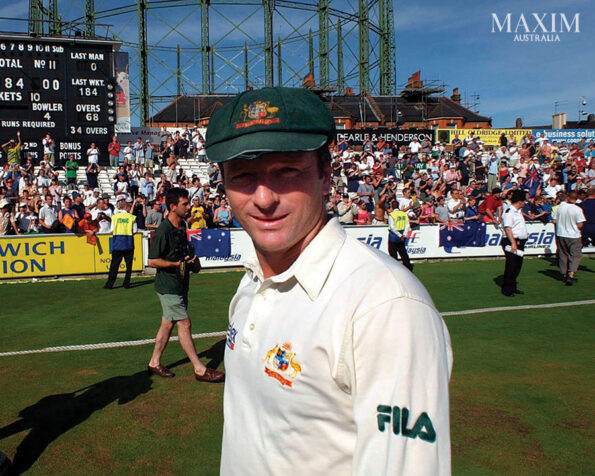
The baggy green of the new millennium is instantly recognisable as that worn throughout most of the 20th century. There have been some changes over the years but generally these have been short lived, although a few changes have been more enduring. The 1899 cap and the modern cap bear some differences, hence the introduction of the century-old replica lookalike in 2000 as an intentional and dramatic point of difference. The current cap is made by Kookaburra Sport in Perth, whose association with the cap commenced at the New Year’s Test in 2017. An announcement stated: “CA regularly reviews its supplier contracts, and its minimum criteria for the Baggy Green were that the company be Australian owned, the caps be made of 100% Australian wool, and the manufacturing be done in Australia.”
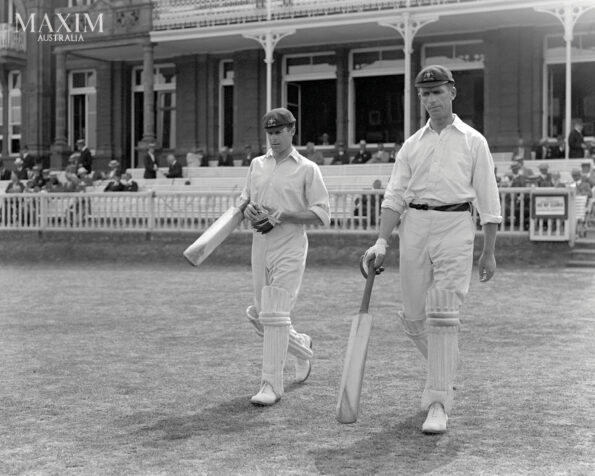
The cap’s essential elements are its shape, cloth, the components of the coat of arms – shield, scroll and crest – and any use of dates. All of these have changed at times over the years, and although presented as a constant, the baggy green has in fact been a continuing work. The components of the baggy’s coat of arms have also evolved. The scroll set below the shield and originally blue featured the words ‘Advance Australia’. The colour changed to red soon after, and then in the early 1930s ‘Advance’ was dropped.
Similar coats of arms were used by sports, towns and cities from the 1850s and reflected important elements of Australian life and history: commerce, immigration, the production of sheep and wheat and the minerals extracted from the ground, represented by the picks. These elements of the shield are set around a Southern Cross and were supported by the uniquely Australian kangaroo and emu, set below the crest – a rising sun indicating a new dawn – and above the inspiring ‘Advance Australia’, which reflects the aspirations of the emerging nation. The fact that the players had created the emblem would have reinforced this sense of ownership. The cap may well have been a symbolic battlefield between two sides keen to establish their legitimacy: at the time, people often asked whether the players were representing the board or the nation.
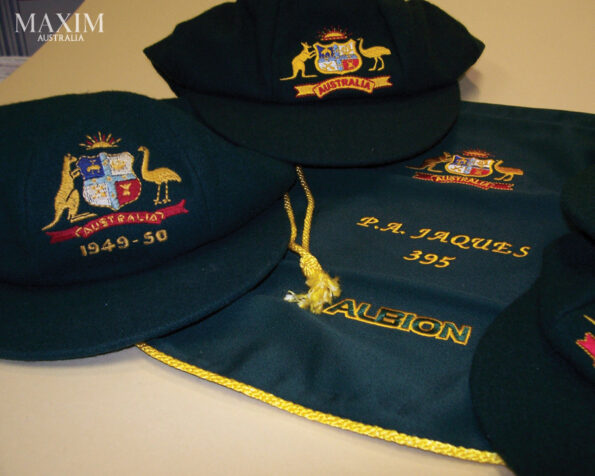
The official Australian coat of arms of 1908 made no reference to the states and several alterations were suggested, which resulted in the current Commonwealth coat of arms that was proclaimed, again by royal warrant, by George V on 19 September 1912. Significantly, this had just ‘Australia’ in the wreath. We have no explanation for why the 1908 arms was used by the cricket board for the cap after 1910, or why the board reverted to the original 1899 cricket coat of arms after World War I. It remains a mystery why the official coat of arms of 1912 was not adopted by cricket, as it was by other sports.
The shape of the shield has also varied. Generally, it has been presented as it is today: wider at the top and bottom with a narrow waist. In 1928-29 and again in 1930 the shield was even wider at the top and tapered to a point at the bottom. Similarly, the shape and size of the rising sun, kangaroo and emu have changed. The basic design of the shield supported by the kangaroo and emu was in use from at least 1884. The 1893 Australian team sported a shield on the cap and blazer, and the 1896 side included a kangaroo and emu. The original and current coat of arms has the kangaroo on the left and the emu on the right, but this positioning was reversed for the 1905, 1907-08 and 1909 teams.

There was one season when the Australian cap carried a different coat of arms. The 1963-64 cap sported the official Australian coat of arms as set out in the 1912 Royal warrant. The cap for the 1963-64 series against South Africa carried the kangaroo, emu and ‘Australia’ ribbon and sported the Commonwealth shield, which contains the individual crests of the six states and not the ship, sheep and so on. The rising sun was replaced by a six-pointed star, although the Commonwealth star has seven points. This crest, which sat on top of a blue and gold wreath, was featured on the blazer as well and appears to have been used only for that season. There is no official explanation for this, although one theory is that the coat of arms was replaced in response to the controversy over that summer’s tour by the Springboks.
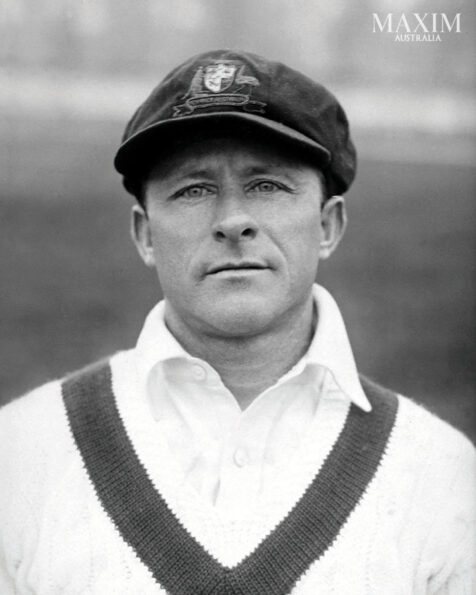
green. (Alamy)
From 1930 to 1972 the date of each series was embroidered on the cap in the traditional place: below the scroll. There have been some exceptions to this: in 1909 the date was woven into the ribbon in the middle of ‘Advance’ and ‘Australia’; in 1931-32, as modelled in a classic photo of Bradman, the date appeared on either side of the newly singular ‘Australia’. What is known is that from 1932-33 to 1972 the cap’s design remained the same, barring the 1963-64 cap. The current cap retains this design, with the lack of date and cotton thread the only changes from the Bodyline days. Traditionally, players received numerous caps, especially when they were dated.
A new cap was awarded for each series, and on some tours – notably the 1948 tour – players received two caps. This fact has only recently been uncovered; the accepted wisdom had been that one cap was issued for each series. The State Library of South Australia inquired into the issuing of caps when they were offered a second Bradman 1948 cap in 2004. The issuing of two caps on the 1948 tour became irrefutable when, in July 2004, Barry Gibbs uncovered the existence of an original players’ contract for that tour. He obtained a copy of the contract and found that paragraph 32 stated: “The Board shall provide each player with a blazer, two caps, sweater and tie.”
In the 1970s and 1980s the awarding of caps was not done automatically each season, although players from that era received several caps during their career. Albion’s former managing director Tony Henson said that repeated requests for replacement caps by two senior players in the early 1980s alerted him to the possibility that the demand by the public for caps was becoming excessive. At his request the board set down rules for the allocation of baggy greens. Since the 1990s the current policy, which is strictly enforced, stipulates that a player is presented with a cap on debut and that this will be his sole cap unless it is stolen or lost or if it needs to be replaced due to excessive wear.
In July 2007 Cricket Australia’s kit manager, Adam Fraser, provided a copy of this policy: “The Baggy Green is obviously presented to each player on the ground before the commencement of the first Test they’re selected to play in. CA policy is that the Baggy Green shall not be replaced unless stolen or severely damaged. Players are required to fill in a form that verifies that their baggy has been lost, stolen or damaged before consideration is given to issuing a new one. Generally, we find that players are very protective of their Baggy Greens and don’t like to have them replaced.”
Now the awarding of a cap has evolved into a ceremony whereby a past player makes the presentation to the debutant, again reinforcing the legacy of the elite club of Australia Test cricketers. In 2008 this elite club had only 399 members, with Western Australia’s Chris Rogers being Australian Test player No. 399. In 2023 there were 466 numbered Test players, with Matthew Kuhnemann debuting in that year.
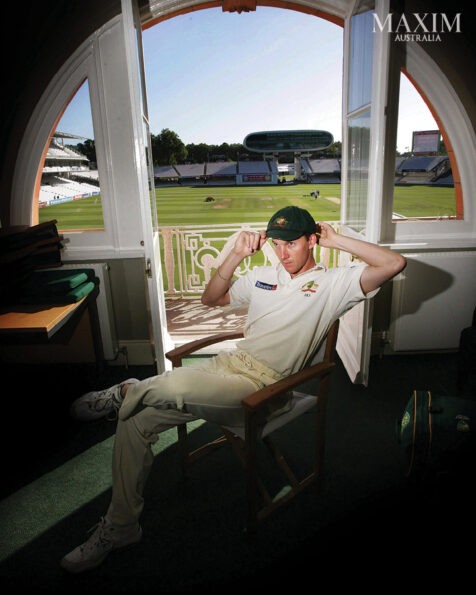
In a further mark of respect for the cap, Albion C&D made and presented to each player a bag to house the cap, further protecting it. Embroidered upon the bag was the player’s name and Test number.
In 2002-03 the ACB rebranded itself as Cricket Australia and a new logo was created. The board’s annual report said: “The new brand mark incorporates the kangaroo and emu from the traditional cricket coat of arms, the Southern Cross, Australia’s green and gold colours and a sunburst, representing the traditional relationship between cricket and the Australian summer.” Importantly, “the cherished Baggy Green cap has not changed. After consultation with players and other stakeholders about a suitable approach for Australia’s most famous cap, it was agreed that the iconic Baggy Green should remain in its current form. It will keep the traditional cricket coat of arms emblem.”
The final word comes from Steve Waugh, the man who personified the Australian cap in this period and intertwined traditions with the demands of the present: “The ultimate goal is to wear the Baggy Green cap. There’s something special about putting that cap on. There’s no way you will catch me wearing a white hat. The cap’s always on my head. There’s an aura about the Australian cap.” ■

ABOUT THE AUTHOR
Michael Fahey is one of the major players in the sports memorabilia scene and has been trading and valuing collectable since 1993. He is now the Official Valuer to ASM, Rugby Australia Archives, SCG, Bradman & NZ Rugby Museums, NZ Sports Hall of Fame and a Commonwealth Government Cultural Gifts Program Approved Valuer.
THE BAGGY GREEN by Michael Fahey and Mike Coward (Gelding Street Press, AU$34.99/NZ$39.99) is available at BIG W and all good bookstores from October 30
By MICHAEL FAHEY
For the full article grab the November 2024 issue of MAXIM Australia from newsagents and convenience locations. Subscribe here.




